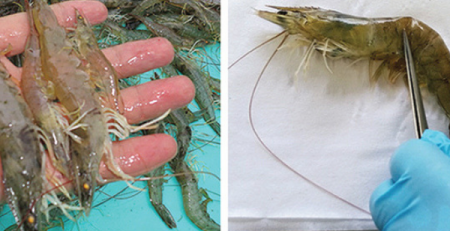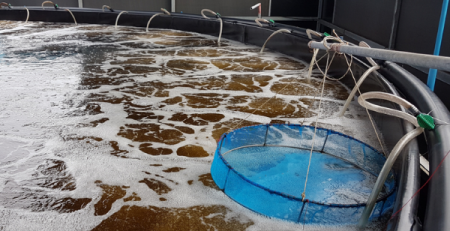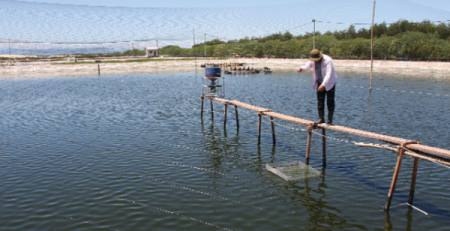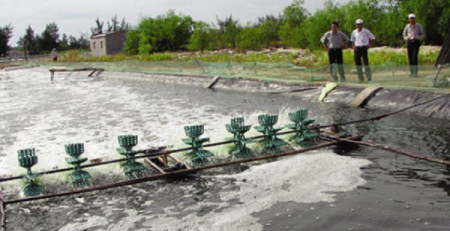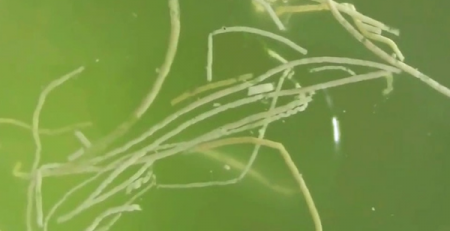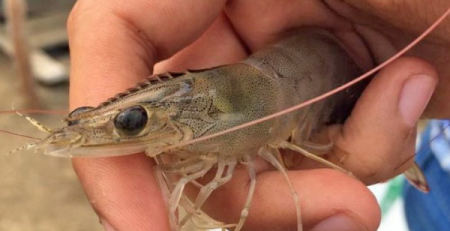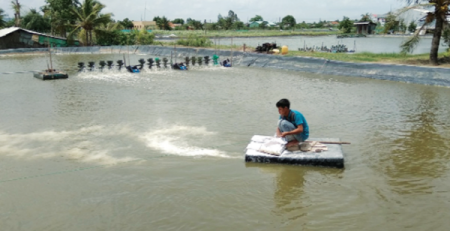Use of chlorine in shrimp culture
Chlorine is one of the most widely used chemicals in aquaculture to improve the pond environment.

Chlorine is commonly used in shrimp farming
Effect of chlorine
Chlorine is a white compound, soluble in water. When dissolved in water releases chlorine gas to make the water have a characteristic odor.
In aquaculture, chlorine is more commonly used in the form of calcihypochlorite than sodium hypochlorite because when dissolved in water, Ca (OCl) 2 produces two HOCl molecules and dissociates into two OCl- ions. HOCl and OCl- directly affect the cell membrane of the bacteria.
In the shrimp culture, Chlorine disinfects ponds, lakes, equipment, tools …; Kill bacteria, viruses, algae, plankton in water environment; Oxidation of organic matter and exotic germs in seed production.
Depending on the purpose the farmer needs to use different doses: Disinfecting equipment, tanks and utensils: 100 – 200 ppm (30 minutes); Disinfection of pond bottom: 50 – 100 ppm; Pond water treatment: 20 – 30 ppm; Treatment of parasitic diseases: 0.1 – 0.2 ppm; Treatment of bacterial diseases: 1 – 3 ppm (10 – 15 minutes).
Note
The use of chlorine directly to disinfect, remove organic or ammonia is not effective and often toxic to the culture if the amount of chlorine used too much. Therefore, farmers should note the following:
Degradation of chlorine is very wide so the beneficial bacteria in water and pond bottom are easy to kill, making water colors difficult to up. Therefore, it is necessary to use microbial enzymes to restore microorganism of pond bottom;
Do not apply lime before using chlorine because it will reduce the effect. Use balances, if excess will be toxic to farmed shrimp;
Chlorine should only be used to treat the supply of water (ie, used in sedimentation ponds or ponds without shrimp) as residues of chlorine will be toxic to cultured shrimp and aquatic species;
Should not use when the pond water is rich in nutrients, organic matter because of the occurrence of adverse reactions caused toxic fisheries;
Once used, no other bactericidal chemicals such as BKC, Formaline …;
Do not apply lime before using Chlorine as it will reduce its effect when the pH is high;
The amount of chlorine depends on the amount of organic matter in the water and the pH of the water. The higher the pH, the higher the organic content, the higher the chlorine treatment dose.
Chlorine removal spectrum is very wide so almost all beneficial and harmful bacteria are killed, leading to the bottom of the pond is inert and difficult to cause color. Therefore, it is necessary to use microbial enzymes to restore the microorganism of pond bottom after use.
Please note that after 4 days of Chlorine use a strong fan to reduce the residual chlorine content (Cl2) and use the Cl2 test kit available on the market to check the residual Cl2 content. Use sodium thiosulphate to neutralize Cl2 at a dose of 0.99 mg / L of sodium thiosulfate to neutralize 1 mg / L of Cl2.
Cre: Contom.vn


